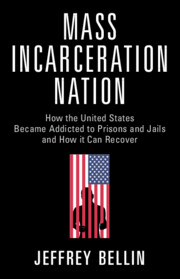 Mass Incarceration Nation
Mass Incarceration Nation Book contents
Part IV - The Road to Recovery
Published online by Cambridge University Press: 03 November 2022
Summary
The next chapters turn to reform. Most criminal justice experts agree that substantial change is needed to reduce the incarcerated population. There are, however, differing articulations of the ultimate goal and little precision about how to get there. Disentangling the two threads of criminal law enforcement in the United States can help. As explained throughout the book, there are, in essence, two parallel systems. One is the core system for addressing serious, often violent crimes like homicides, identifying those who commit such crimes and allotting appropriate punishments. This system is fairly characterized as the criminal justice system. The other is primarily a policy tool designed to address societal problems like drug abuse. This criminal legal system seeks to achieve each era’s distinctive policy goals by imposing punishment for violations of essentially regulatory laws. We can dramatically cut back on this second system, while preserving, and moderating the severity of, the first. That would return the country to a criminal justice system not unlike the model that existed up until the 1970s. All that is needed is to undo the changes described in Parts II and III, recasting those Parts as a blueprint for reform.
- Type
- Chapter
- Information
- Mass Incarceration NationHow the United States Became Addicted to Prisons and Jails and How It Can Recover, pp. 163 - 193Publisher: Cambridge University PressPrint publication year: 2022


